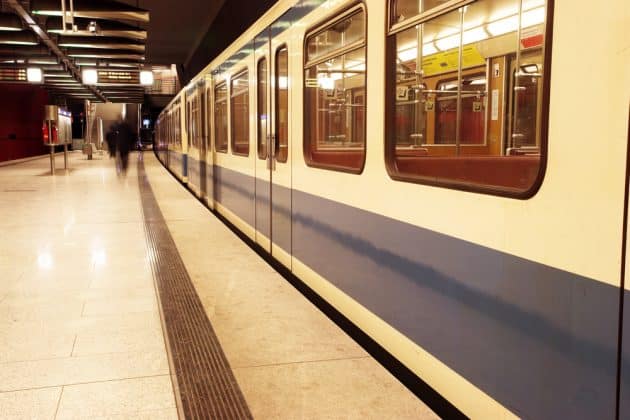
San Miguel Corporation (SMC) is expecting to receive the first batch of Metro Rail Transit Line 7 (MRT-7) trains from South Korea soon.
SMC said that the trains were obtained from South Korea’s Hyundai Rotem Company, and consists of six cars or two trainsets measuring 65.45 meters long. Each train has passed factory acceptance tests and inspections.
This is the first of several train set deliveries, which will come in batches until all of the 108 cars of 36 train sets arrive in the country, according to Rappler.
Arthur P. Tugade, the Department of Transportation secretary, told Manila Bulletin last June that the construction of the railway project is in full swing despite the difficulties posed by the COVID-19 pandemic.
As of July, the MRT-7 was 60.93 percent complete and slated to begin partial operations by April next year. Full operations for the railway line are expected to begin by the fourth quarter of next year.
When completed, the 22-kilometer, 14-station train service will slash travel time between Quezon City and Bulacan to 35 minutes from the usual two to three hours. It will accommodate around 300,000 to 850,000 daily commuters.
The projects of the century
The new MRT-7 line will be directly connected to the Light Rail Transit Line 1 (LRT-1), the MRT-3, and the highly anticipated Metro Manila Subway via the Unified Grand Central Station, which is expected to be partially operational by the fourth quarter of the year.
These infrastructure projects are part of the government’s efforts to decongest Metro Manila and ease mobility for millions of commuters throughout the capital region, especially along main transit routes.
Dubbed the “Project of the Century”, the Metro Manila Subway is a 36-kilometer underground railway that links Mindanao Avenue in Quezon City to NAIA Terminal 3 in Pasay. It’s expected to reduce travel time between Quezon City and Pasay to 45 minutes from 1 hour, and shuttle almost 370,000 passengers daily.
Meanwhile, the Unified Grand Central Station, also known as the Common Station, is intended to seamlessly connect LRT-1, LRT-2, MRT-3, MRT-7, and the Metro Manila Subway. It will be located on the corner of Epifanio de los Santos Avenue (EDSA) and North Avenue in Quezon City, and serve nearly 478,000 commuters daily.
Besides the MRT-7, Common Station, and the Metro Manila Subway, there’s also the resurrection of the Philippine National Railways (PNR) North 2 railway line project, also called the North-South Commuter Railway. Upon completion, the project will allow for quick travel between Manila and Clark International Airport (CIA), serving over 350,000 passengers every day.
Buyers seeking transport-oriented developments
In an article published by Inquirer, it was revealed that Metro Manila has the fourth-worst traffic congestion in the world based on a survey conducted by TomTom, which studied the traffic situation in 416 cities in 57 countries.
With the completion of the aforementioned infrastructure projects like the MRT-7 line, it’s hoped that these conditions will improve in the near future for commuters throughout the capital region.
Given these circumstances, it’s understandable that many property seekers are showing an increased interest in transport-oriented communities, which will only intensify as people return to physical work spaces.
This was observed in Lamudi’s most recent trend report, which details a strong appetite for rental properties close to mass transportation hubs. As lockdown restrictions are lifted and the return to offices is imminent, property seekers are prioritizing mobility above all else.
Lamudi’s data also revealed that property seekers were searching for rental properties near Metro Manila Subway destinations, which are key areas that have heavy foot traffic.
Among the areas marked for proposed Metro Manila Subway stations include Ortigas City, Bonifacio Global City, Bicutan, and Quezon Avenue.
Locations like West Rembo, Ortigas Avenue, and Western Bicutan posted growth in their rental markets from the first quarter of last year to the second quarter of this year, which the report attributes to their proximity to mass transit hubs and central business districts like Makati, Pasig, and Taguig.
Article and Photo originally posted by Lamudi last September 6, 2021.







More Stories
Vista Land Celebrates 50 Years with Sandiwa: An Event Honoring Leadership, Legacy, and the Filipino Dream of Homeownership
Vista Land Celebrates Love Month in Ilocos Region
Vista Land Bridges Cebuano Heritage and Progress with Valencia by Vista Estates